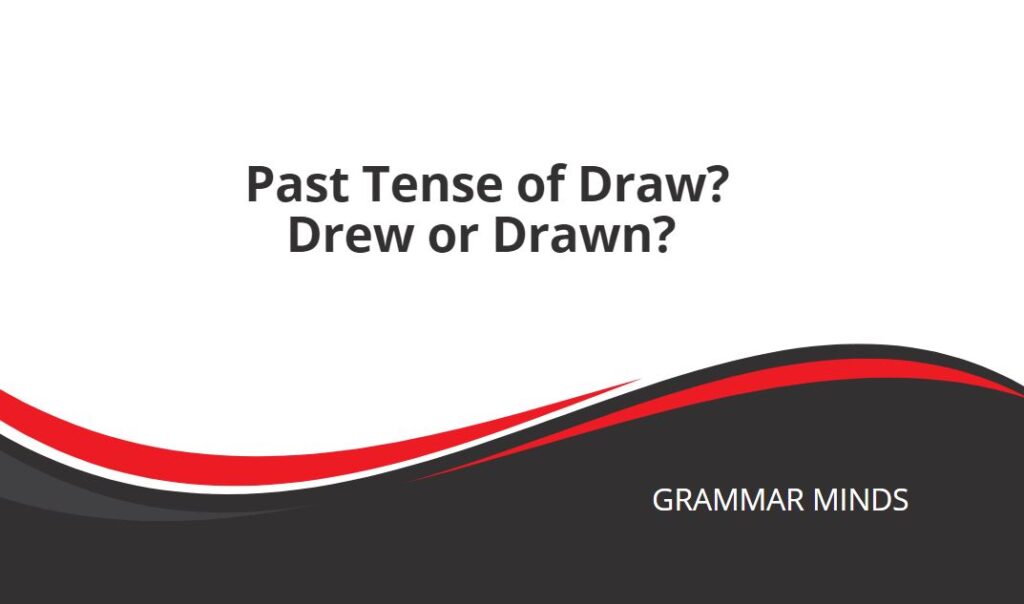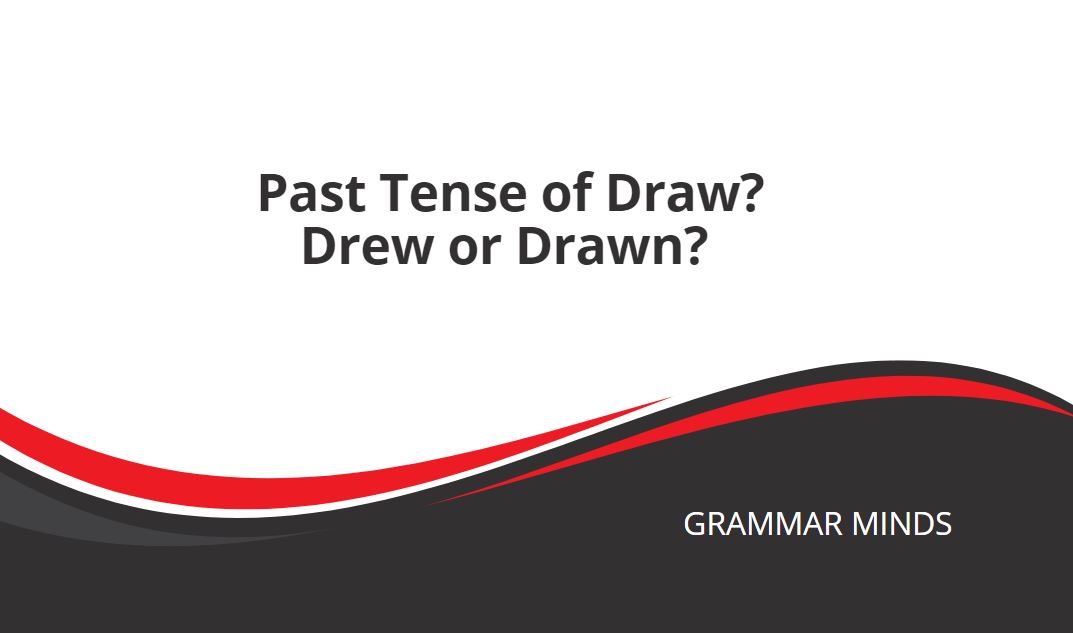Draw is in the present tense. Drew is the simple past, and drawn is the past participle.

What’s the past tense of “draw”?
The verb draw is when “someone or something produces an image, design, or plan by making lines and marks on paper or some other surface with a pen, pencil, ruler, etc.”
- Draw is an irregular verb (does not follow the standard “ed” past tense formation).
- Drew is the simple past tense form; drawn is the past participle form.
| Examples: “Drew” in past tense sentences |
| Mary drew a picture of her family at the beach. |
| Last summer, we drew a mural on the school wall. |
Verb tenses of draw
| Past | present | future | |
| simple | I drew | I draw | I will draw |
| continuous | I was drawing | I am drawing | I will be drawing |
| perfect | had drawn | had drawn | will have drawn |
| perfect continuous | I have been drawing | I have been drawing | I will have been drawing |
- To draw is the present tense: She can draw beautifully.
- Draws is third-person present singular: He draws cartoons in his free time.
- Drawing is the present participle: Drawing helps me relax after a long day.
- Drew is the simple past: Yesterday, I drew a portrait of my friend.
- Will draw is the future tense: She will draw a map of the town for the project.
- Drawn is the past participle: The curtains were drawn tightly shut.
When to use drew vs. drawn
Both the simple past tense and the past participle are verb forms in English used to describe actions or events that occurred in the past. However, they serve slightly different purposes and are used in different contexts. Compare the following:
She drew a picture of her cat. (simple past)
The curtains were drawn to keep out the sunlight. (past participle)
The first sentence in the simple past tense describes the action or event that happened in the past and is now completed.
The second sentence uses the past participle and shows the state resulting from the action in the past. We use the past participle to form verb phrases, passive constructions, and perfect tenses.
To form the past participle, use the past participle form of the verb. For example, ‘The plans were drawn up last week.’
To summarize, the key difference between the simple past tense and the past participle is their usage: the simple past tense describes actions in the past, while the past participle forms verb phrases and passive constructions to describe states resulting from past actions.
“Draw”, present tense, used in sentences
- She draws beautiful landscapes with colored pencils.
- He draws cartoons for the school newspaper.
- The artist draws inspiration from nature.
- They draw geometric shapes on the chalkboard.
- The child draws pictures of animals in their sketchbook..
“Drew”, past tense, in sentences
She drew a detailed map of the neighborhood.
- He drew a portrait of his grandmother for her birthday.
- The architect drew blueprints for the new building.
- They drew sketches of the crime scene for the investigation.
- The teacher drew diagrams on the whiteboard to explain the concept
“Drawn”, (past participle), used in sentences
- The curtains were drawn to keep out the sunlight.
- She had drawn a detailed map of the city.
- The picture was drawn by a famous artist.
- The plan had been drawn up carefully by the engineers.
- He was drawn to her kindness and intelligence.
Synonyms of draw
sketch
- design
- illustrate
- draft
- outline
- trace
- paint
- render
- depict
- drag
- pull
- attract
- entice
- lure
- haul
Origin of the word draw
From etymology online on draw (v.):
Old English dragan “to drag, to draw, protract” (class VI strong verb; past tense drog, past participle dragen), from Proto-Germanic *draganan “to draw, pull,” from PIE root *dhragh- “to draw, drag on the ground.”
https://en.wiktionary.org/wiki/draw#:~:text=English-,Etymology,to%20draw%2C%20pull%E2%80%9D).
Self Assessment Quiz
1. Which sentence uses the past tense of “draw” correctly?
2. Fill in the blank with the correct past tense of “draw”:
She ______ a beautiful landscape last weekend.
3. Choose the correct past participle form of “draw”:
4. Identify the sentence with the incorrect past tense form of “draw”:
5. Select the correct sentence with the past tense of “draw”:

